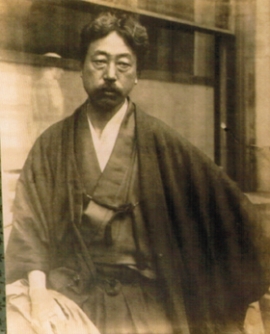







Published originally in 1906, Okakura Kakuzo is captivating me
with his literary elegance and mastery of the art of tea.

Master Kakura was born in Tokyo, Japan in 1862
According to the inside sleeve of the book:
Master Kakuro was born in 1862. He was “a Japanese art and cultural critic who later served as an advisor and a curator of the Department of Japanese and Chinese Art at the Museum of Fine Arts, Boston, from 1903 to 1913.”
It seems that Master Kakuro wrote the book in English originally.
This book offers a unique traditional perspective from 100 years ago – without a translation gap to English.
There are seven chapters in the book. I plan to read a chapter every two days.
From this project I wish to gain a deeper insight on the art and beauty of tea and its preparation; as well as how to cultivate one’s life to create happiness and harmony 🙂










Click to LIKE us on Facebook 🙂







